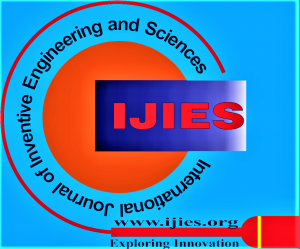![]()
Optimizing Railway Safety and Efficiency: A Comprehensive Review on Advancements in Outof-Round Wheel Detection Systems
Girmay Mengesha Azanaw
Girmay Mengesha Azanaw, Lecturer, Department of Civil Engineering, Institute of Technology, University of Gondar, Gondar, Ethiopia.
Manuscript received on 01 February 2025 | First Revised Manuscript received on 25 February 2025 | Second Revised Manuscript received on 06 March 2025 | Manuscript Accepted on 15 March 2025 | Manuscript published on 30 March 2025 | PP: 38-52 | Volume-12 Issue-3, March 2025 | Retrieval Number: 100.1/ijies.A132405010525 | DOI: 10.35940/ijies.A1324.12030325
Open Access | Editorial and Publishing Policies | Cite | Zenodo | OJS | Indexing and Abstracting
© The Authors. Blue Eyes Intelligence Engineering and Sciences Publication (BEIESP). This is an open access article under the CC-BY-NC-ND license (http://creativecommons.org/licenses/by-nc-nd/4.0/)
Abstract: Railway safety and operational efficiency represent fundamental cornerstones of contemporary transportation, demanding ongoing innovations in monitoring systems. This review meticulously explores the latest advancements in out-ofround wheel detection technologies, which are crucial in averting derailments and curtailing maintenance expenditures. The study synthesizes progress in sensor technologies, such as highresolution imaging, ultrasonic sensors, and acoustic emission detectors, facilitating the early detection of wheel irregularities. By merging these sensors with advanced signal processing algorithms and cutting-edge machine learning techniques, current systems can accomplish real-time surveillance and predictive maintenance, thus diminishing the chances of catastrophic failures. The review evaluates diverse methodologies adopted for detecting out-of-round wheels, juxtaposing traditional manual inspection techniques with automated systems. It underscores the advantages of rapid data acquisition and the utilization of sophisticated analytics in improving detection accuracy across various environmental conditions. Furthermore, the discussion encompasses the challenges associated with sensor calibration, data noise, and the scalability of these systems within high-speed railway networks. Through a thorough assessment of experimental studies and real-world implementations, the review pinpoints key performance indicators and delineates the prospects of integrating these systems into existing railway safety protocols. It also emphasizes the necessity for standardized benchmarks to comprehensively evaluate system reliability and overall performance. Looking towards the future, the paper suggests avenues for further research, such as the creation of multi-sensor fusion frameworks and adaptive algorithms to enhance diagnostic precision. Ultimately, these advancements hold the potential to significantly bolster railway safety and operational efficiency, thereby contributing to the modernization of global rail infrastructure.
Keywords: Out-of-Round (OOR) Wheel Detection, Railway Safety and Efficiency, Predictive Maintenance and Artificial Intelligence (AI) in Railways.
Scope of the Article: Civil Engineering and Applications
